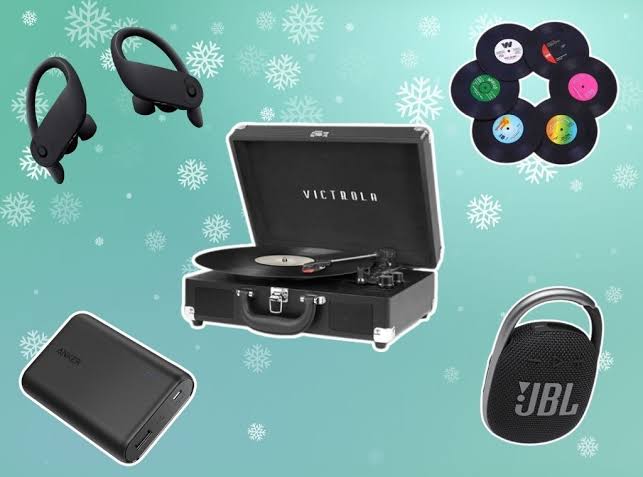Technology is now very important for managing fitness and athletic performance. As of July 2025, fitness devices have advanced beyond simple step counters and calorie trackers. Today’s gadgets provide real-time health monitoring, AI coaching, personalized data insights, and virtual training options. Whether you exercise casually or compete at a high level, the right device can help you train better, recover faster, and achieve your health goals.
From smartwatches and fitness trackers to smart clothing and recovery tools, these devices are helping individuals train smarter, not just harder. This comprehensive guide explores the top gadgets of 2025 that cater specifically to fitness enthusiasts and athletes, highlighting their key features, benefits, and how they enhance the overall fitness experience.
Smartwatches: The All-in-One Fitness Companion
Smartwatches continue to be the cornerstone of fitness tech. In 2025, the best models go beyond tracking steps and heart rate—they now offer advanced metrics like VO2 max, lactate threshold estimates, and real-time ECG monitoring. The Apple Watch Ultra 2 and Garmin Forerunner 965 are among the top picks for serious athletes.
The Apple Watch Ultra 2 provides multisport tracking, advanced safety features like fall and crash detection, and even emergency SOS via satellite. Meanwhile, Garmin’s Forerunner 965 is favored for its detailed performance analytics, including training load, recovery times, and adaptive workout suggestions based on historical data.
These smartwatches are also water-resistant, GPS-enabled, and offer sleep tracking and stress monitoring, making them holistic health tools suitable for daily wear and intense training alike.
Fitness Trackers: Focused Performance and Simplicity
For those who prefer a lighter, more streamlined wearable, fitness trackers remain highly relevant. Devices like the Fitbit Charge 6 and Whoop 5.0 are designed to offer focused insights without the distractions of full smartwatch features.
Fitbit Charge 6 integrates with Google’s ecosystem and offers personalized workout summaries, heart rate variability data, and guided breathing sessions. Whoop 5.0, popular among elite athletes, provides a strap-only design that focuses on recovery, strain, and sleep tracking. It uses continuous data collection to give users a daily readiness score, helping them determine when to push harder or rest.
Both of these trackers prioritize battery life, with up to a week of usage on a single charge, making them perfect for endurance athletes or those who travel frequently.
Smart Rings: Compact Yet Powerful
Smart rings like the Oura Ring Gen 4 and Ultrahuman Ring AIR have become popular for their subtle design and powerful health monitoring capabilities. These rings are perfect for individuals who don’t want to wear a bulky watch or strap during workouts or while sleeping.
The Oura Ring Gen 4, released earlier in 2025, offers advanced sleep tracking, blood oxygen monitoring, skin temperature sensors, and a readiness score that guides recovery and activity planning. The Ultrahuman Ring AIR emphasizes metabolic health, stress management, and movement tracking with detailed glucose level insights for those focused on fat loss or performance nutrition.
These rings are lightweight, unobtrusive, and durable, making them ideal for wear throughout the day, night, and even during intense workouts.
Smart Clothing: Tech-Enhanced Training Gear
The integration of sensors into clothing has created a new frontier in fitness tracking. Smart clothing like Hexoskin Smart Shirts and Athos Compression Wear uses embedded sensors to collect real-time data on muscle activation, heart rate, breathing patterns, and posture.
Hexoskin’s latest 2025 model delivers lab-grade respiratory and cardiac data and is being used by professional teams and coaches worldwide. Athos, meanwhile, specializes in EMG (electromyography) sensors that measure muscle engagement during strength training exercises. This helps athletes correct form, avoid injury, and target muscle groups more effectively.
While smart clothing may be a higher investment, it offers an unparalleled look at how your body moves and responds during workouts—essential for optimizing technique and performance.
Smart Scales: Going Beyond Weight
In 2025, smart scales are more sophisticated than ever, offering full-body composition analysis that includes muscle mass, bone density, hydration levels, and visceral fat. The Withings Body Scan and Garmin Index S2 are leading the way in this category.
Withings Body Scan even includes a built-in ECG and nerve activity monitoring, which can be vital for tracking cardiovascular health and early warning signs of fatigue or overtraining. Garmin’s Index S2 integrates seamlessly with its wearable ecosystem, making it easy to track body composition trends over time alongside workout performance and calorie expenditure.
Smart scales are vital for anyone aiming for fat loss, muscle gain, or long-term body health, giving a far more accurate picture than weight alone.
Recovery Devices: Optimizing Performance and Preventing Injury
Recovery is as crucial as training, and 2025 has seen a surge in intelligent recovery gadgets. Devices like the Theragun Pro 6, Normatec Go, and Hyperice Venom 2 are helping athletes reduce soreness, improve circulation, and bounce back faster.
The Theragun Pro 6 features AI-driven routines that adapt per user input and sync with the Therabody app to guide recovery based on workout data. Normatec Go offers mobile compression therapy for legs, ideal for runners and cyclists. Hyperice’s Venom 2 provides heat and vibration therapy in portable wraps for the back, shoulders, or knees.
These tools are no longer luxuries—they’re being used by both amateurs and professionals to enhance performance, reduce injury risk, and promote long-term health.
Virtual and AI Fitness Coaches
With the rise of generative AI and smart assistants, virtual coaching is more personalized than ever. Apps like Freeletics AI Coach, Fitbod, and Tempo Studio now use real-time data from wearables to adapt workouts dynamically, offering on-demand coaching based on fitness level, recovery status, and user goals.
AI coaches can provide guided strength training, yoga, HIIT, and endurance workouts while analyzing performance and giving feedback—similar to a human personal trainer. These platforms also include community support, progress tracking, and video demonstrations, giving users everything they need to succeed from the comfort of home or on the road.
Final Thoughts
The fitness tech landscape in July 2025 is a testament to how far innovation has come. From smartwatches and rings to AI-driven recovery tools and performance gear, there’s a gadget for every fitness enthusiast and athlete. Whether you’re training for a marathon, lifting for strength, or simply trying to stay healthy, these devices offer meaningful insights and support that help users reach their goals faster and more efficiently.
As technology continues to evolve, the future promises even more personalized, accurate, and holistic health monitoring tools. For now, choosing the right combination of these top-rated gadgets can elevate your fitness journey, enhance motivation, and make every workout count.



